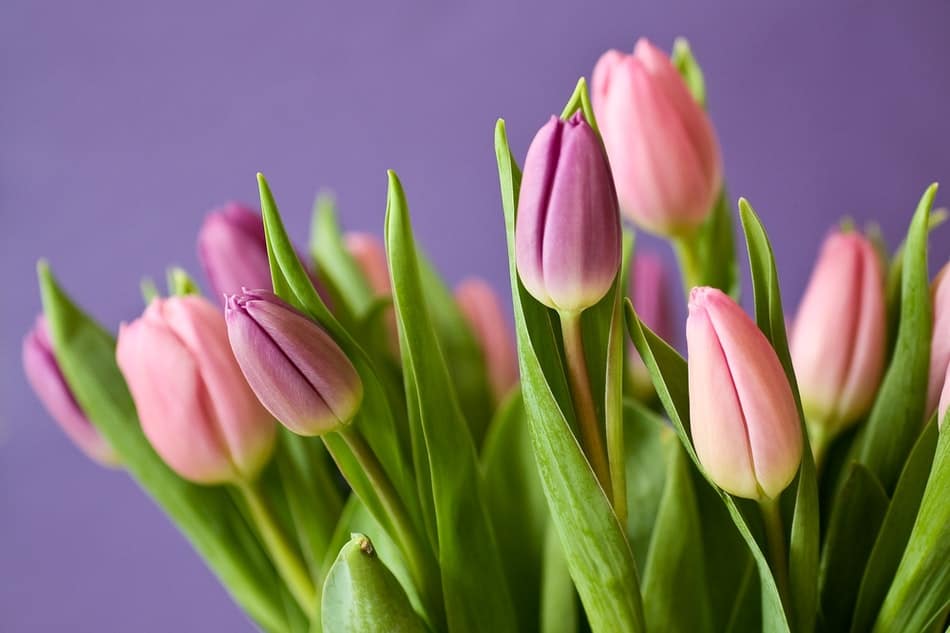Tulips are beautiful flowers that can be grown in a hydroponic garden. You can easily learn how to care for hydroponic tulips. In this article, I will discuss the best ways to keep your tulips healthy and thriving. I will also provide some tips on how to deal with common problems that may occur during the growing process. So, if you want to learn more about how to care for hydroponic tulips, keep reading!
If you’re growing tulips hydroponically, you’ll need to take extra care to ensure they receive the nutrients they need. While most commercial systems come with a nutrient solution, it’s always a good idea to check the levels before adding your tulips.
What Are Hydroponic Tulips?
Hydroponic tulips are a type of tulip that is grown using hydroponics. Hydroponics is a method of growing plants without soil. Instead, the roots of the plant are submerged in a nutrient-rich solution. This method of growing plants has many benefits, including increased yields and faster growth rates.

Hydroponic tulips are becoming increasingly popular among growers due to their many benefits. If you’re thinking about growing hydroponic tulips, here are a few things you should know.
- First, hydroponic tulips require less water than traditional methods. This is because the roots are constantly supplied with water and nutrients.
- Second, they grow much faster than traditional methods. In some cases, they can even flower in as little as six weeks.
- Finally, hydroponic tulips are less likely to be affected by pests and diseases. This is because the growing environment is much cleaner and more controlled.
How To Care For Hydroponic Tulips
If you’re looking for a beautiful and unique way to add some color to your home, consider growing hydroponic tulips. Though they require a bit more care than traditional tulips, the results are well worth it. Here are a few tips on how to care for your hydroponic tulips:
- To start, you’ll need to purchase quality bulbs. Tulip bulbs that have been forced (grown in artificial light) tend to be the best option. Once you have your bulbs, it’s time to plant them.
- Hydroponic tulips should be planted in late winter or early spring. Fill each planting container with an inch or two of gravel, then add the bulbs on top. Gently press them into the gravel so that they are half-buried.
- Next, you’ll need to water your tulips regularly. Keep the roots moist but not soggy by checking the moisture level every few days. If the roots start to dry out, give them a good soaking.
- Finally, make sure to fertilize your tulips every couple of weeks. A water-soluble fertilizer is best since it can be easily absorbed by the roots. Follow the package directions for the best results.
With a little bit of care, you can enjoy gorgeous hydroponic tulips all spring long!

How Long Does It Take Hydroponic Tulips To Grow?
Tulips are one of the most popular spring flowers, and they can be grown hydroponically. So, how long does it take for hydroponic tulips to grow?
Tulip bulbs typically take about 12 weeks to mature. However, there are a few things that can affect the amount of time it takes for your tulips to grow. The type of tulip you’re growing, the size of the bulb, and the conditions in your growing environment can all play a role in how long it takes for your tulips to reach maturity.
If you want to get an early start on your spring garden, you can start your tulip bulbs indoors about eight weeks before you plan to transplant them outdoors. By starting your tulips indoors, you can control the conditions in your growing environment and give your tulips a head start on the growing season.
Once your tulip bulbs have reached maturity, you can enjoy their beautiful blooms all spring long!
Do Tulips Regrow After Cutting?
The short answer is yes, tulips will regrow after being cut. However, it is important to note that the type of tulip you have will affect how well it regenerates. For example, Darwin Hybrid tulips are known for their ability to quickly regenerate and produce multiple blooms per season. Conversely, species tulips like the Greigii or Kaufmanniana varieties are not as adept at regeneration and may only produce a single bloom each year.
When cutting your tulips for bouquets or other arrangements, be sure to use a sharp knife or shears and make a clean cut at an angle just above the bulb. Once they have been cut, place the tulips in water immediately so they can begin to absorb moisture. You can then transfer them to a vase or other container. For best results, keep the tulips in a cool, dark location and change the water every few days. With proper care, your tulips should last for several weeks.
Should I Add Fertilizer To Hydroponic Tulips?
Hydroponic tulips are a beautiful and unique addition to any home or garden. They are easy to care for and require little maintenance. However, like all plants, they need nutrients to grow and thrive. Fertilizers can provide these essential nutrients, but it is important to choose the right fertilizer for your hydroponic tulips.
There are many different types of fertilizers available on the market, so it is important to do some research before choosing one for your plants. You will also need to consider the concentration of the fertilizer you use. Too much fertilizer can burn your plants, so it is important to follow the directions on the package carefully.
If you are unsure about which fertilizer to use, you can ask a local gardening center or nursery for advice. They will be able to recommend a fertilizer that is right for your hydroponic tulips.
Final Words
To ensure your tulips thrive, follow these simple tips: water regularly, fertilize monthly, and provide plenty of light. With a little care, you’ll enjoy beautiful blooms all season long! Thanks for reading and happy gardening!
Do you have any tips for growing hydroponic tulips? Share them in the comments below!
Popular Articles

